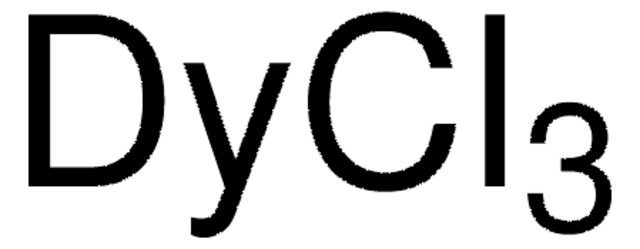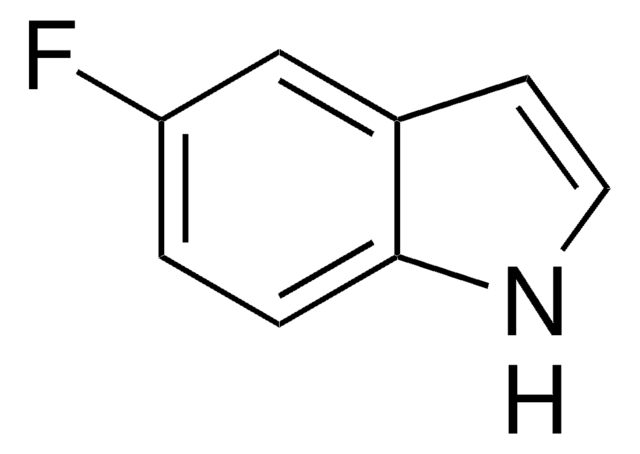About This Item
推薦產品
等級
for analytical purposes
品質等級
化驗
99.9% trace metals basis
形狀
crystals and lumps
反應適用性
reagent type: catalyst
core: dysprosium
雜質
≤2000.0 ppm Trace Rare Earth Analysis
SMILES 字串
O.O.O.O.O.O.Cl[Dy](Cl)Cl
InChI
1S/3ClH.Dy.6H2O/h3*1H;;6*1H2/q;;;+3;;;;;;/p-3
InChI 密鑰
HFEOHRWLEGXZHW-UHFFFAOYSA-K
尋找類似的產品? 前往 產品比較指南
應用
- 六齿胺配体镝(III)络合物的合成: 本研究探索了一种新型镝络合物的合成,重点介绍了其在分子磁性和催化等领域的潜在应用(Gonzalez-Barreira et al., 2023)。
- 具有场诱导单离子磁体行为的五齿席夫碱镝(III)络合物: 这项研究描述了镝络合物的磁学性质,可用于开发新的磁性材料(Corredoira-Vazquez et al., 2023)。
- 具有缓慢磁化弛豫的四核镝席夫碱络合物: 研究重点关注了镝基络合物的合成和表征,该复合物对数据存储技术有潜在意义(Gebrezgiabher et al., 2022)。
- 氯化物路线合成的DyF3纳米颗粒的自组装: 研究了使用六水合氯化镝(III)合成的氟化镝纳米颗粒的性质,该研究与各种纳米技术的应用相关(Alakshin et al., 2018)。
訊號詞
Warning
危險聲明
危險分類
Eye Irrit. 2 - Skin Irrit. 2 - STOT SE 3
標靶器官
Respiratory system
儲存類別代碼
11 - Combustible Solids
水污染物質分類(WGK)
WGK 3
閃點(°F)
Not applicable
閃點(°C)
Not applicable
個人防護裝備
dust mask type N95 (US), Eyeshields, Gloves
客戶也查看了
文章
The rare earth elements impact nearly everyone in the world. All of the people living in advanced technological countries and almost all those living in third world countries utilize the rare earths in their everyday living—the car that one drives (gasoline is refined from oil using rare earth catalysts and catalytic converters reduce the polluting emissions from the automotive exhaust), watching the news on TV (the red and green colors in TV screens), the telephones and computers we use to communicate (the permanent magnets in speakers and disc drives), just to name a few examples.
我們的科學家團隊在所有研究領域都有豐富的經驗,包括生命科學、材料科學、化學合成、色譜、分析等.
聯絡技術服務















